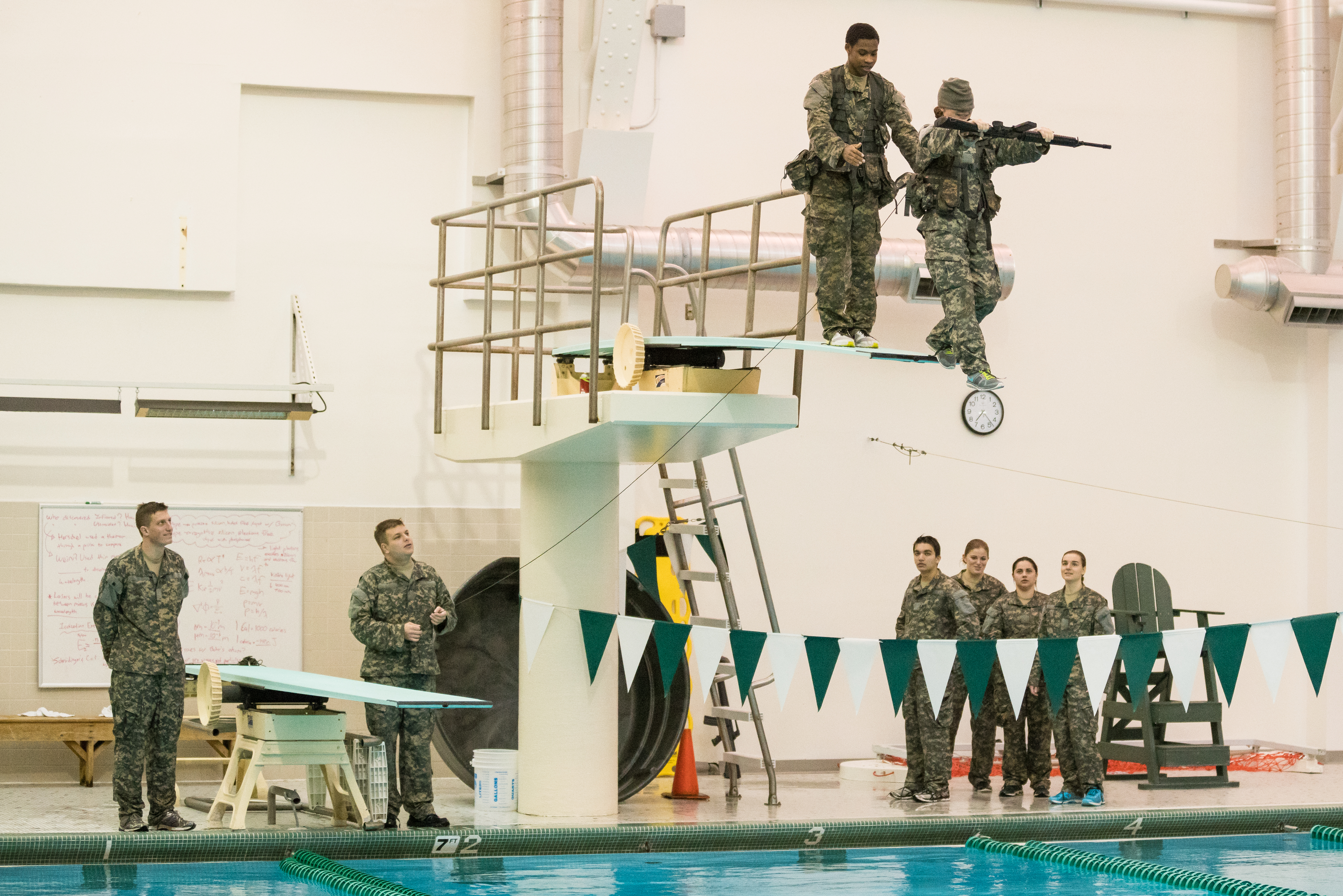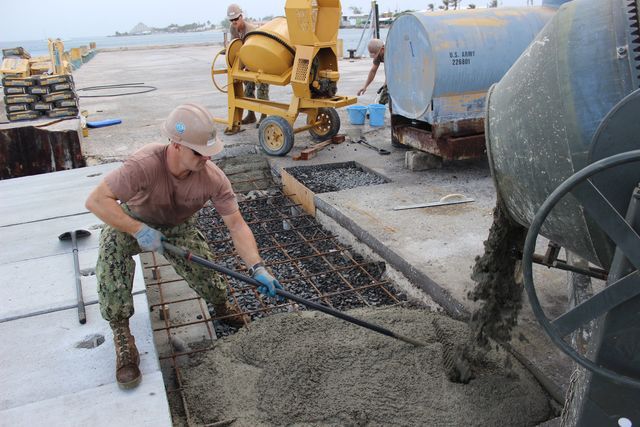About Your Guide
As a cadet in Dartmouth’s Army ROTC program, I get to run around in the woods and shoot my friends with paintball guns. It’s like a game except it’s not. We do other cool things too. Last year we completed the Army Combat Water Survival Test. The different events tested our ability to survive if we somehow found ourselves in water. Soldiers do not have to be strong swimmers. We’re not the Navy after all. But there are times—like being stationed on small tropical islands in the Pacific—when soldiers have to be prepared to deal with water.

Combat Water Survival Test (Spring 2016)
I would be amiss to overlook my own stake and participation in the United States colonial project in the Kwajalein Atoll. As a citizen of the continental United States, the American military presence in the Pacific furthers my physical security and economic welfare. The development of nuclear weapons and antiballistic missiles in the Marshall Islands during the Cold War safeguarded the American way of life. While the threat of nuclear war is less imminent today, Kwajalein continues to protect mainland America by serving as an antiballistic missile launching site and an international symbol of American power.
Moreover, as a cadet and future Army officer I participate directly in military colonialism. While it is unlikely I will ever be stationed on Kwajalein, I may very well end up somewhere like it. Kwajalein is just one glaring example of the many military bases that exist by virtue of the displacement and exploitation of the indigenous population.
When I asked the Captain who runs the Dartmouth ROTC program if he had ever heard of Kwajalein, his eyes lit up. While most soldiers have never heard of the small island, in a previous job the Captain had managed engineering projects in the Pacific. He had never personally visited Kwajalein but it was under his purview. The Captain explained to me that the quality of life on Kwajalein itself is great given its isolation and size, like the “shitty” part of Hawaii. Ebeye—the nearby island populated by displaced Marshallese—is another story. The island is overcrowded, ridden with flies, and has garbage flowing into the sea. It is Brazilian favela bad, the Army’s dirty secret of the Pacific. The United States military does enough for the residents of Ebeye to survive but not much else. When Ebeye lost its freshwater supply in a flood, the Army rushed in support to fix the desalination plant and keep the Marshallese from dying. They have also built a pier to ferry them to and from Kwajalein. According to the Captain, most Ebeye residents are too poor to immigrate to the United States or another part of the Marshall Islands. They are trapped. Both the Captain and I are complicit in this reality.

